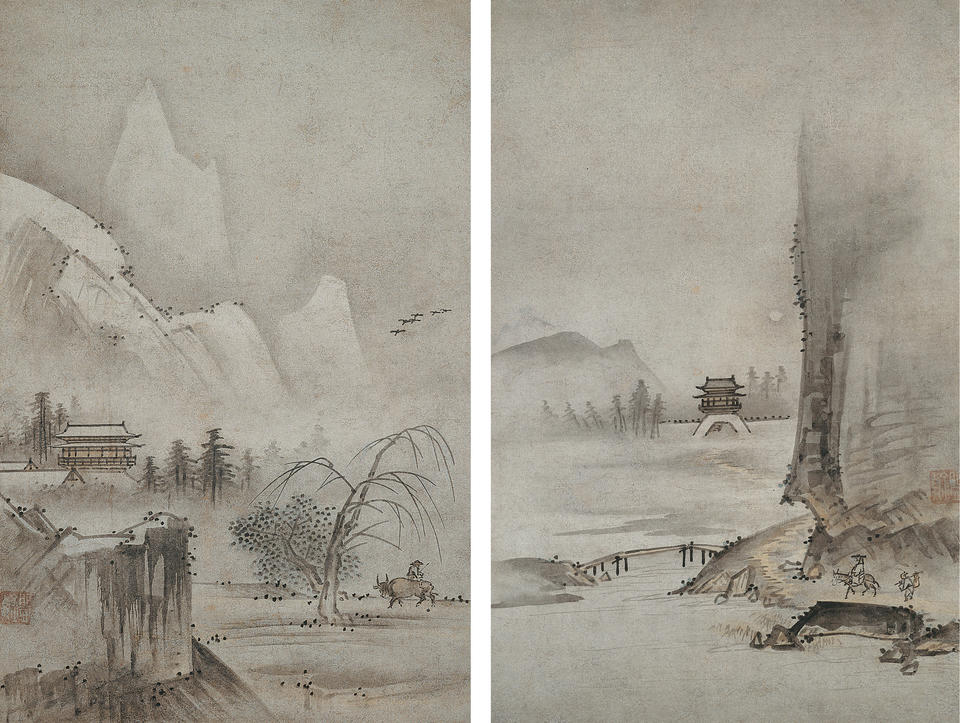Kanō Sanraku
From Wikipedia, the free encyclopedia
(Redirected from
Kano Sanraku)

Set of sliding doors of Plum tree by Kanō Sanraku

Pair of screens with tigers and storm-dragon by Kanō Sanraku, 17th century, each 1.78 x 3.57 metres.
[1]In this
Japanese name, the family name is Kanō.
Kanō Sanraku (狩野 山楽
?, 1559 – September 30, 1635) was a
Japanesepainter also known as Kimura Heizō (his birth name), Shūri, Mitsuyori, andSanraku.
[2][3][4] Sanraku's works combine the forceful quality of Momoyama work with the tranquil depiction of nature, and they have a more refined use of color typical of the
Edo period.
[5]Contents [
hide]
1 Life2 Works3 Notes4 References5 External linksLife[
edit]
His father was the painter
Kimura Nagamitsu[2] who flourished circa 1570, and he was born in
Shiga Prefecture and died in
Kyoto.
[4]Sanraku worked for
Toyotomi Hideyoshi[2] in the 1570s,
[4] which lead to him studying under and being adopted by
Kanō Eitoku.
[2][4]Sanraku was the half-sibling and teacher of
Kanō Sansetsu,
[4] and became Eitoku's son-in-law and later the head of the
Kanō school.
[2] When Sanraku had no son he married
Kano Sansetsu (1589–1651) to his daughter and adopted him. Sansetsu and his school remained in Kyoto when most Kanō artists moved to
Edo (often after a summons from the shogun), and he continued to adhere to the brightly coloured style of the
Momoyama period. His son Einō painted in the same style, but is better known for a biographical history of Japanese painting, which gave the Kanō school pride of place.
[6]Sanraku's patrons included
Tokugawa Hidetada.
[2] Like most Kanō artists of the period, he painted in a variety of styles, including both large works for decorating castles (like the two illustrated), and smaller scrolls, often in a monochrome style derived from Chinese
ink-wash painting.
Works[
edit]
The three laughing men of the valley of the tiger, screen, color,
India ink, and gold on paper.
Tokyo National Museum.
[2]






